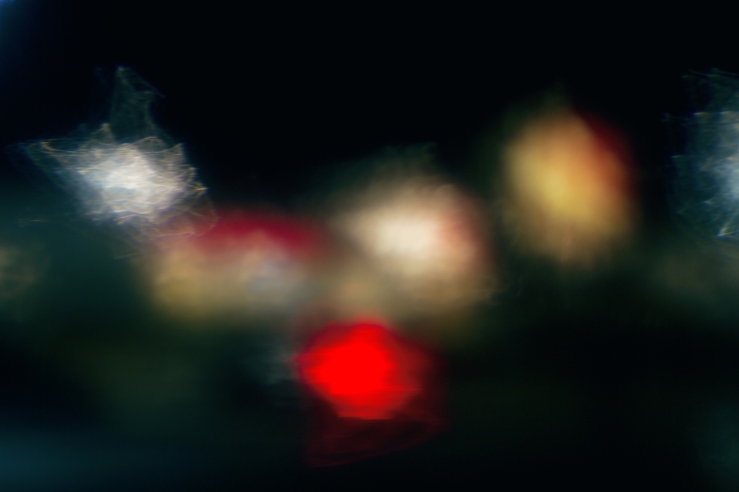
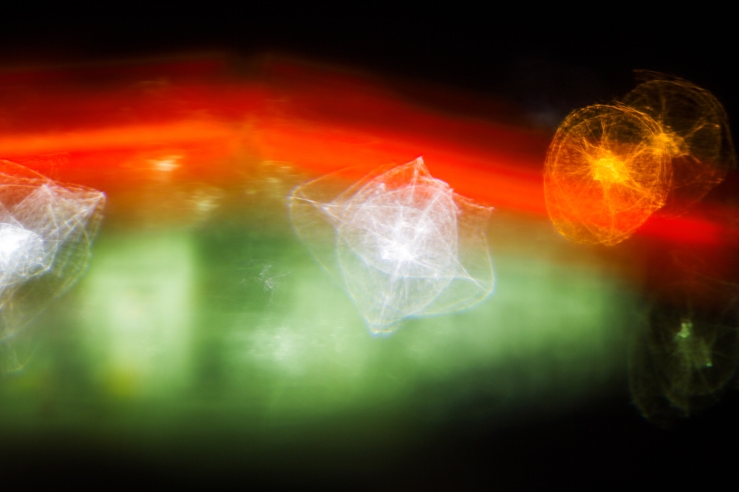
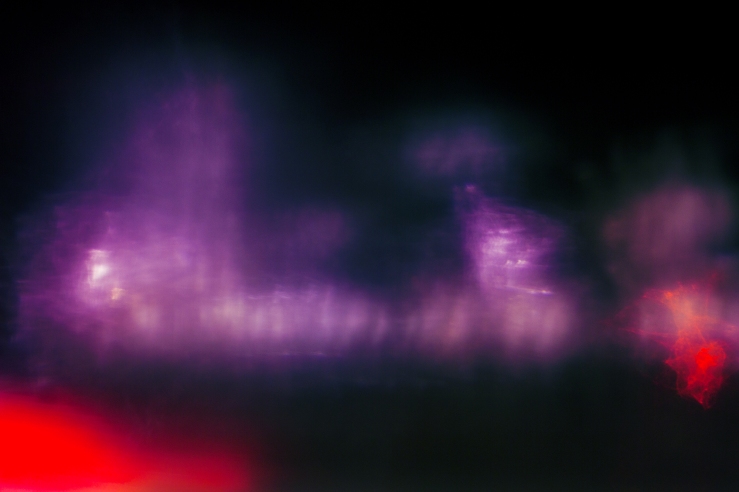
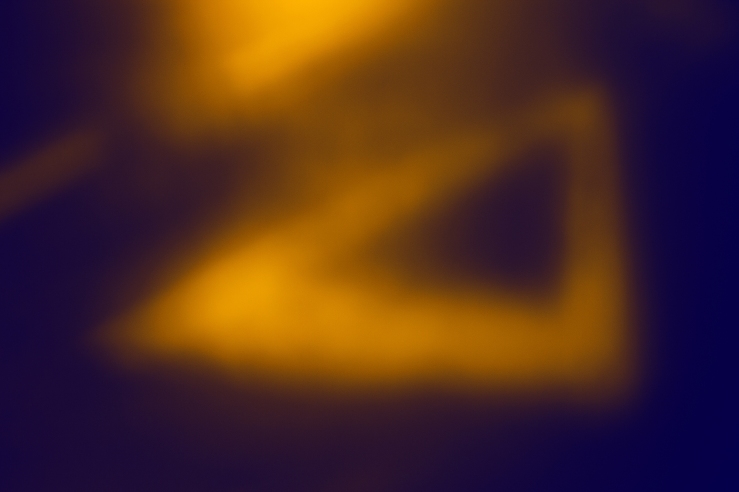
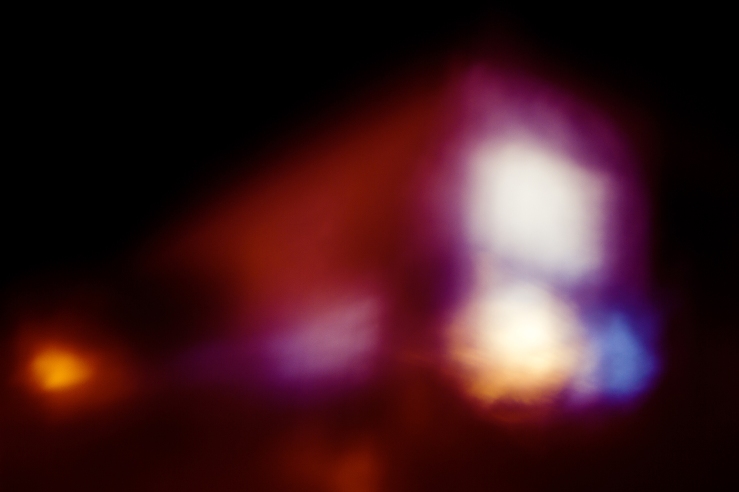
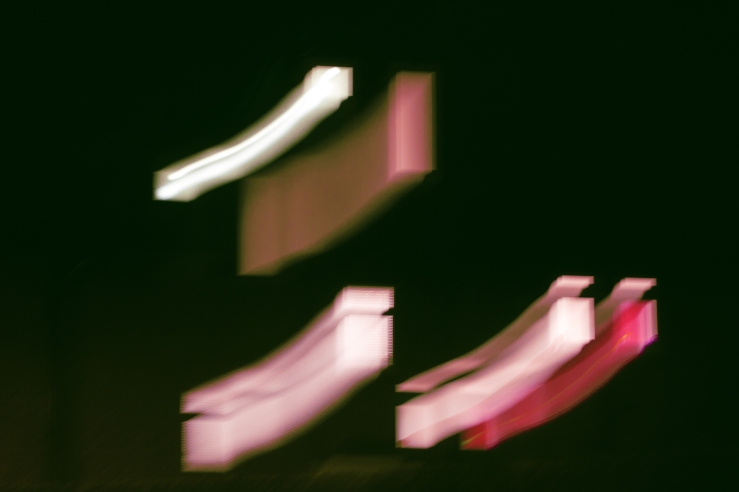
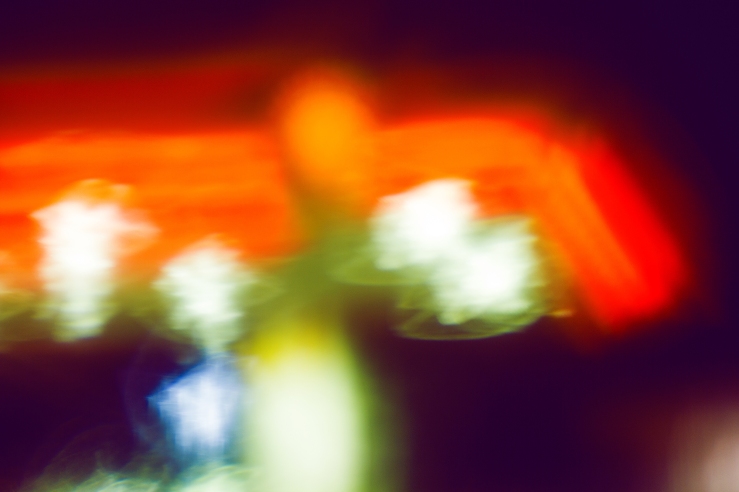
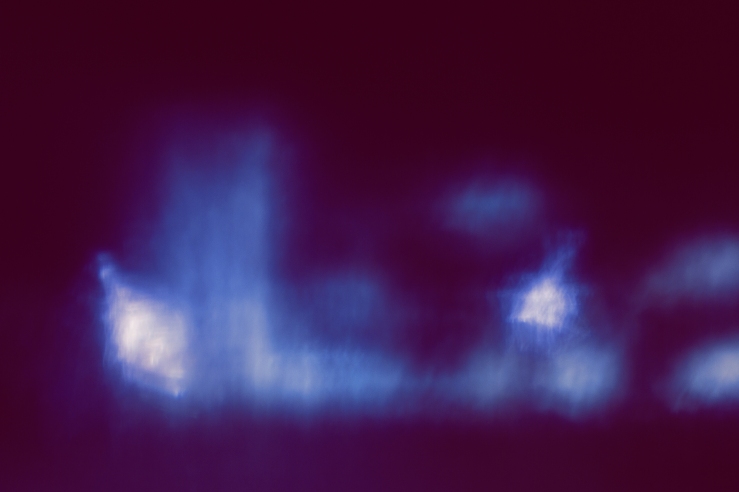
This series of urban landscapes intend to reveal an unusual view of what we could call the ordinary. Reflections and flares from artificial light imprint a cosmopolitan atmosphere on the picture but the overall distortion and brightness brings the element of the doubt: what is it that we are watching?
By looking at the landscape through a textured filter, details get lost. The image softens and there are only two elements left on the frame: light and shapes. The resulting landscape feels unreal. It evokes memories or certain altered state of the mind which makes it difficult to identify the scene. The surreal sense of the images is accentuated with colour manipulation, creating a dynamic and bold set of images.
Technical approach
After experimenting with different types of prisms and their effect when placed between the lens and the scene, I have achieved the best results with a textured plastic lid from a lemon saver container. Held over a 50mm lens it gave me the option to move it around in order to alter the detail gained in different areas of the frame. The camera was used handheld so there is some movement provoked by the long exposures and the cold. Colours were altered or enhanced using Selective Colour on Photoshop CC 2017, since I find that Hue/Saturation affects the quality of the image a bit more.
Following the advice from my tutor, I experimented with this technique in different times of the day. I had chosen daylight originally for the project but the results achieved shooting at night were far more interesting. The feedback of the original submission invited me to play with colour saturation and so I created a different set of images using daylight, including new images and re processing some of the previous photographs:
I did not like the results and couldn’t get much variety of colours. I have also tried an urban setting during day time and did not find it inspiring. This is the reason why I have chosen to submit my Assignment 4 on Artificial Light instead.
Contact sheets
Conclusion
Assignment 4 has proven to be the most intricate so far because of the amount of shooting and testing involved. I has also taken a lot of experimenting, which I think has contributed to an interesting set of final images. Night shots can become a cliche if taken on a conventional way or if the viewer only gets what it is commonly expected from urban landscape at night. The images presented here are bold and vibrant, yet they were taken in a quiet location. An element that brings interest to these photographs is the element of chance, as the results are unexpected until the image is registered by the sensor. The variations are infinite for shape and colour, and yet the composition is neat. I would say this is a very creative set, at least for what I tend to produce. Shooting at night helped me step out of my comfort zone and this is something that I found helpful when trying to create.
As I wrote on the previous blog, the work resonates with Naoya Hatakeyama’s “Slow Glass” series (pointed out by my tutor on the original submission). The artist I have been thinking the most while observing night lights is Rut Blees Luxemburg, as I started to feel intrigued about street lights reflections combined with the texture of the pavement and the constantly changing waves of colours that can be found at night.
It was mid September when I first started shooting for this assignment and I am happy yo see the very many different approaches and routes that a project can take, even if it’s a brief set of images. From all the submitted work so far, I see this one becoming a long term project. I would like to introduce some variations and experiment with longer exposures and camera movement.
















